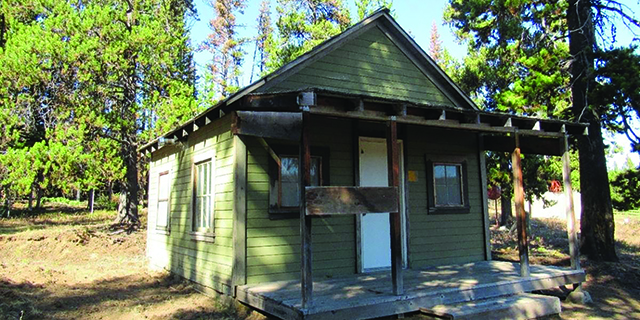Wandschneider: How far ahead do we—can we—see?
Published 8:32 am Wednesday, February 20, 2019
It’s been almost 60 years since a college professor named Wheelwright suggested that we can all imagine the world as it was prior to our arrival, but cannot easily imagine the world going on after our deaths. He was talking about the origins of political and religious beliefs, and how descriptions of hell are always stronger than those of heaven—we’ve seen the hellish in our lives, but get fantastical when we try to see paradise. The distant future is too far from our lives.
Mothers and fathers tell us stories about themselves and the world—their worlds especially—before us. Textbooks, parades, sports teams, teachers, coaches, uncles, neighbors and the immediate world we come into is invariably linked to a past full of stories, places, and relatives—some of whom looked like us when they were young!
Trending
And the present is all around us, sometimes painful, sometimes good, and at all times part of a bigger world that we understand from growing experience, from seeing and listening and absorbing life as it happens. Our lives seem pregnant in the present with the past and the world around—and in good times ready to burst into the future. Past and present link us to a semi-predictable tomorrow.
Living in chaos, as the children of war in Europe and Asia did in the 1940s, Vietnam did in the 1960s, and Syria and Iraq and Afghanistan do now, must be hell. Yesterday was hell; today is scary; and there might not be a tomorrow. Living in drought, political turmoil, and hunger in Central Africa or Venezuela today shrinks the past and the future to the grains of rice and pieces of bread eaten or wished for today.
Here, we count our blessings, attribute them to good family, good religion, good country. And we imagine our children in the same or very similar worlds. They’ll go to church like we do, school like we did, find jobs like we did (or a little bit better). The jobs will be ones we know and can name: running the ranch, teaching school, practicing medicine or law, welding, plumbing, cutting trees, newspaper reporting or maybe even writing computer programs—whatever that is! How good it is to have a son or daughter stepping over our lead, doing something that didn’t exist when we were young, living somewhere exotic that we can visit, working with smart people we want to meet.
We’re stretched by an ever-changing present: a generation ago we would not have imagined our daughters running the ranch, doctoring, or driving big trucks, our sons working as nurses or elementary teachers. There is a story in today’s New York Times about women as early computer programmers. Bright women had worked breaking codes in WW II. After the war, with law schools and medical schools still largely off limits for women, some found their way—by taking aptitude tests—into early computer work
The important thing in all this imagining is that we see a future world—not too distantly—as if we are in it, watching our grandchildren and maybe great-grandchildren carry on lives not too distant from our own.
When those easy visions become difficult, some of us bolt. In less than a generation, the idea that some of our children would be with same-sex partners—imagined I am sure by a small percentage of our fathers and grandmothers, but not by most of us—has become a reality. When a grandchild marries someone of another color or religion—as has always happened but now becomes more frequent, most but not all of us adjust those movies of future lives.
Trending
It’s like that with weather and climate. We imagine some hot summers and cold winters, the occasional forest fire, flood, or hurricane. Weather seems a series of random but recurring events in our ordered world. Our grandchildren will have the same good years and bad in the same hayfields.
But what if the hayfield stays dry for a decade, as farms and fields in Syria and Iraq have? What if the tide rises above our coastal homes, or swallows the small island, Kiribati, that its citizens call a country?
Futurists, like the writer Ursula LeGuin, can imagine a world without war and one where color and gender matter less, and climate scientists make pictures of land and water 50 and 100 years from now. But it is when 100 years becomes tomorrow, when the fires and floods lap at our doors, when climate becomes weather, when brown grandchildren come to our houses, when the future touches us at one child’s remove, that the future becomes real.









